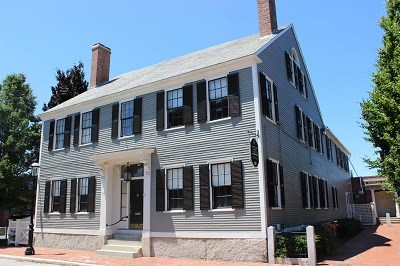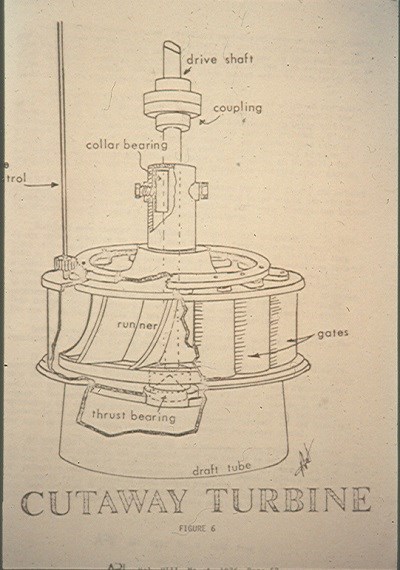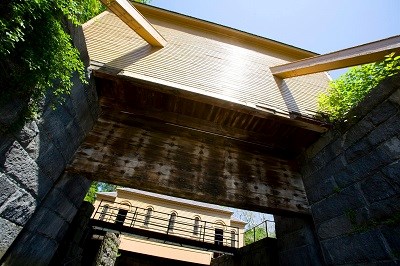
IntroductionWhen the city of Lowell became the first successful planned industrial city in America, it not only revolutionized manufacturing but also created a new way of life: a life ruled by time, a life powered by new opportunities. Perhaps one of the most enduring legacies left to the city of Lowell was that of James Bicheno Francis. Throughout Francis’s life his bold and innovative ideas made him one of the driving minds behind America’s Industrial Revolution. 
Early LifeJames B. Francis was born in Southleigh, Oxfordshire, England, on May 18, 1815 where he served as an apprentice to his father for four years at the Port Craw Railway and Harbor Works in South Wales. Francis immigrated to the United States in the spring of 1833 and almost immediately found work under the watch of George Washington Whistler, the father of painter James McNeill Whistler. Together they worked on the construction of Stonington Railroad. One year later in 1834 both men moved to the young city of Lowell where Whistler became the chief engineer of the Proprietors of Locksand Canals, the owners of the canals in Lowell. Francis remained as an assistant to Whistler and one of his early tasks was to make detailed drawings of locomotives. These drawings were the blueprints for the railroad construction in New England. Francis’s life changed forever in 1837 when George Washington Whistler resigned, left Lowell to work on one of Russia’s major railroads, and appointed the 22 year old James B. Francis his successor as the Chief Engineer of Locks and Canals. 
"The Chief of Police of Water"In 1841 the Proprietors of Locks and Canals appointed Francis the task of determining the quantities of water drawn by the mills along the canal. Much impressed with Francis’s work, the proprietors, in addition to Chief Engineer, bestowed upon him the title of Manager of Locks and Canals in 1845. The people of Lowell also gave Francis another title. They nicknamed him “The Chief of Police of Water” due to his strict and scientific management of Lowell’s waterways. In 1845 Francis designed and implemented the first sprinkler system at one of the Suffolk Mill Picker Houses. His motivation for designing and incorporating them was simple: he realized that the risk of fire was very high and that his ingenious idea could save lives. By 1846 Francis developed a new power canal to provide water power to the mills. Eighteen months later in 1848 the Northern Canal completed the 5.6 miles of canals in Lowell. It was also the largest canal in the system measuring 100 feet in width, 1.5 miles long and ranging from 17 to 20 feet in depth. With the completion of the Northern Canal, water flow increased by 50 percent. 
TurbinesWith the canal system completed, Francis next turned his attention to turbines. Originally the mills had used waterwheels or breast-wheels that rotated when filled with water. These types of wheels could achieve a 65 percent efficiency rate. One such problem with these wheels was backwater which prevented the wheel from turning. Studying the Boyden turbine Francis was able to redesign it to increase efficiency. Constructing turbines as “sideways water wheels,” Francis was able to achieve an astounding 88 percent efficiency rate. After further experimenting, Francis developed the mixed flow reaction turbine which later became an American standard. Twenty-two of the “Francis turbines” reside in Hoover Dam to this day. His work on these turbines was later published as The Lowell Hydraulic Experiments in 1855. 
The GateDue to Lowell’s changing landscape by the late 1840s, Francis realized that the granite structures at Guard Locks could keep the water back, but the lock chamber doors would not. If the water level ever rose too high, the city could flood. After reading the notes of his friend Uriah Boyden, Francis realized that a flood hit the area in the year 1785. After completion of the Northern Canal in 1848, Francis recognized the weakest point of Lowell was Guard Locks. His plan was to build a 27 foot tall, 25 foot wide, 21 ton gate made of Georgia Pine and treated with a zinc compound to prevent from rotting. This gate would be dropped if the need should ever arise. The gate was completed in the year 1850 and deemed impractical, but, on the morning of April 22, 1852 was put to the test as the city was in danger of flooding. At 3:15 am, the iron shackle that held the gate in place was shattered, the gate was dropped, and the city was saved. No one knows who actually severed the shackle and saved the city, but many suspect it was Isaac Page, the gatekeeper at Guard Locks. For some there was no doubt that James B. Francis was a hero. However, those on the other side of the gate, chiefly those living on the banks of the Merrimack River, did not hail him as a hero for his gate contributed to the flooding of their homes. The Proprietors of Locks and Canals and James B. Francis realized that the canals and the mills were what needed to be preserved. Eighty-four years after the gate first plunged it was dropped again in the year 1936. The gate remained down in the canal for fourteen years before being raised again in 1950. During this time the gate protected the city during the flood of 1936 and the hurricane of 1938. In 2006 the need for the “Great Gate” arose again. However, the gate was not dropped; instead a new gate was created using simple steel beams in the form of a “stop-log” system similar to James B. Francis’s wooden design one hundred and fifty years earlier. 
Later LifeEven in his later life James B. Francis had little time on his hands. In addition to his work in Lowell he also consulted on the construction of the Quaker Bridge Dam on the Croton River in New York and the retaining dam at St. Anthony’s Falls on the Mississippi River. Francis retired as Chief Engineer in 1884 when his son, James, succeeded him. Francis was asked to remain on as a consulting engineer through 1892. Even though he was retired Francis served as a member of the Massachusetts State Legislature for one year, a member of the city council for five years, and a director of the Lowell Gas Light Company for 43 years.The rest of his life was spent in Lowell with his wife Sarah and his six children in their home on Worthen Street, which was formerly the home of George Washington Whistler, currently the Whistler House Museum. James B. Francis died on September 18th 1892 at the age of 77. He is buried in Lowell Cemetery and his grave is built out of granite, just like the canals, and those granite stones are laid in a similar way as the canal granite. Those who knew James B. Francis personally remarked about his excellent judgment and his quiet sense of humor. Even though James B. Francis never worked in a mill or personally dug a canal, his contributions helped to propel the Industrial Revolution and Lowell into the 20th Century. |
Last updated: May 8, 2023
